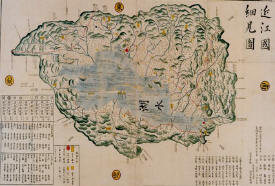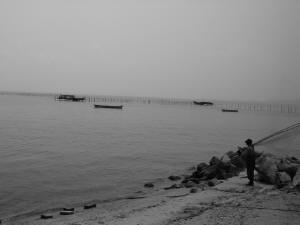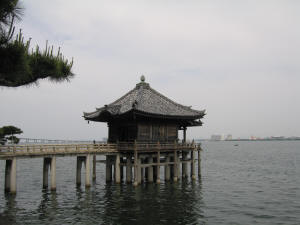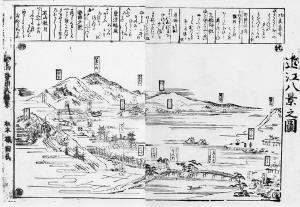Biwako area
(Group leader Tsuneo Nakajima)
Neolithisation 3000 BC-500AD; Modernisation 14th-19th c
Area. Northern Kyoto Prefecture, present Shiga Prefecture, up to Wakasa Bay
Reasons for selection:
(1) B. area includes the largest freshwater lake on the Japanese Archipelago. The area forms a basin, the plains of which are seasonally flooded by lake waters;
(2) Situated on a borderline between broad-leaved and ever-green broad-leaved forests on the Japanese Archipelago, providing for a rich natural environment;
 (3) Throughout history B. area has been a focal point in the trade network of
the Japanese Archipelago, uniting the Japan Sea and the Pacific Ocean.
(3) Throughout history B. area has been a focal point in the trade network of
the Japanese Archipelago, uniting the Japan Sea and the Pacific Ocean.
(4) Strong cultural influence of the capital.
Important issues during the Neolithisation period:
(1) One of the first areas where paddy field rice cultivation started;
(2) Large number of resettlers from the Korean Peninsula during the Kofun
period;
(3) Focal role in the trading networks of continental Japan and the Japan Sea region.
Important issues during the Modernisation period:
(1) Commercialisation of fishing activities as a reaction to the demands of Kyoto;
(2) The activity of travelling merchant groups (Omi merchants) who played an important role in the formation of an all-Japan trading network and founded a big number of large-scale enterprises of present-day Japan;
 (3) Important economical function as the main transport route to the big
cities;
(3) Important economical function as the main transport route to the big
cities;
(4) Relatively early urbanisation processes.
(5) The influence of Eight Omi Landscapes on the environmental perception and aesthetic standards throughout the Japanese Archipelago.